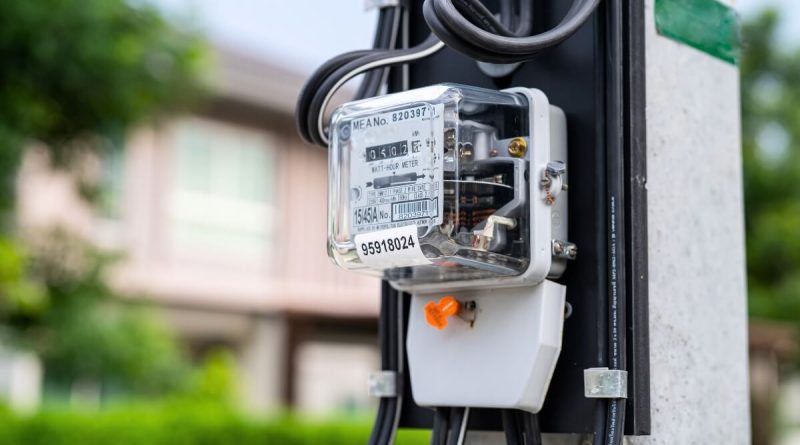Cutting Energy Costs at Home: Tips That Lower Bills (and Help the Planet)
Reducing your energy bills is not only good for your wallet but also helps the environment. By implementing simple strategies, homeowners can lower electricity and water costs while decreasing their carbon footprint. This guide will explore practical tips to cut energy costs at home, focusing on lighting, appliances, water heating, and smart usage habits.
Why Cutting Energy Costs Matters
Energy consumption is a major part of household expenses. On average, electricity accounts for 10–15% of monthly household bills, and water heating can be a significant part of that. Reducing consumption not only saves money but also helps reduce greenhouse gas emissions.
Benefits of cutting energy costs include:
- Lower monthly bills
- Increased appliance lifespan
- Reduced environmental impact
- More efficient home energy use
Step 1: Switch to LED Lighting
Lighting can account for up to 20% of electricity usage in a home. Upgrading to LED bulbs is one of the easiest and fastest ways to reduce costs.
Advantages of LED Bulbs:
- Use 75–80% less energy than incandescent bulbs
- Last up to 25 times longer
- Provide instant full brightness
- Available in various color temperatures for different rooms
Table 1: Cost Comparison of Lighting Options
| Bulb Type | Watts | Average Lifespan | Cost per Year (Electricity) |
|---|---|---|---|
| Incandescent | 60 W | 1,000 hours | $15 |
| CFL | 14 W | 8,000 hours | $4 |
| LED | 10 W | 25,000 hours | $1.50 |
Step 2: Use Water Heating Wisely
Water heating is a significant energy expense, especially in households that use electric shower heaters. Here’s how to reduce costs:
Tips for Water Heating:
- Use off-peak hours if your electricity provider offers time-of-use rates.
- Lower the shower heater temperature by a few degrees.
- Install low-flow showerheads to reduce hot water usage.
- Insulate water pipes to maintain heat.
Table 2: Potential Savings from Water Heating Adjustments
| Action | Estimated Savings per Month | Difficulty |
|---|---|---|
| Shower heater off-peak | $10–$15 | Easy |
| Lower water temperature by 2–3°C | $5–$10 | Easy |
| Install low-flow showerhead | $7–$12 | Medium |
| Pipe insulation | $3–$6 | Medium |
Step 3: Maintain Appliances for Efficiency
Old or poorly maintained appliances consume more energy. Regular maintenance helps reduce costs and extend appliance life.
Key Appliances to Monitor:
- Refrigerators: Clean coils, check door seals.
- Washing machines: Use full loads and cold water cycles.
- Air conditioners: Clean filters monthly, schedule professional maintenance annually.
- Ovens & Microwaves: Avoid using preheating unnecessarily.
Table 3: Appliance Maintenance Tips
| Appliance | Maintenance Tip | Estimated Annual Savings |
|---|---|---|
| Refrigerator | Clean coils and check seals | $25–$40 |
| Air conditioner | Clean filters and service yearly | $30–$50 |
| Washing machine | Use full loads and cold water | $15–$25 |
| Oven | Limit preheating and use residual heat | $10–$20 |
Step 4: Smart Use of Appliances and Electronics
Behavioral changes can save energy without any investment:
- Unplug devices when not in use (TV, chargers, computers).
- Use power strips to turn off multiple devices at once.
- Run dishwashers and laundry machines at night if off-peak rates apply.
- Opt for laptops instead of desktops to save electricity.
Step 5: Heating, Cooling, and Climate Control
Heating and cooling are typically the largest portion of energy consumption in a home.
Tips for Reducing HVAC Costs:
- Use fans or natural ventilation when possible.
- Set thermostats 2–3°C higher in summer, lower in winter.
- Close curtains/blinds to reduce heat loss or gain.
- Seal gaps in doors and windows to prevent energy leaks.
Table 4: HVAC Energy Saving Potential
| Action | Estimated Monthly Savings | Difficulty |
|---|---|---|
| Adjust thermostat by 2°C | $15–$25 | Easy |
| Use ceiling fans instead of AC | $10–$20 | Easy |
| Seal doors and windows | $5–$10 | Medium |
| Close curtains during day/night | $5–$10 | Easy |
Step 6: Renewable and Green Options
Long-term investments can also reduce energy costs and help the planet:
- Solar panels: Generate your own electricity, payback in 5–10 years.
- Solar water heaters: Reduce electricity for hot water by 50–70%.
- Energy-efficient appliances: Look for A++ or Energy Star ratings.
Step 7: Track and Monitor Energy Usage
Tracking your energy consumption helps identify problem areas and opportunities for savings:
- Use smart plugs and energy monitors.
- Compare bills month-to-month to see improvements.
- Apps and smart meters can alert you to high consumption periods.
Estimated Monthly Savings Potential
Here’s a combined estimate of possible savings from applying these energy tips:| Category | Estimated Monthly Savings (USD) |
|---|---|
| LED Lighting | $10–$20 |
| Water Heating Adjustments | $10–$20 |
| Appliance Maintenance | $25–$50 |
| Behavioral Changes (Unplugging, Off-Peak Use) | $15–$25 |
| Heating & Cooling Adjustments | $20–$40 |
| Total Potential Savings | $80–$155/month |
Final Thoughts
Cutting energy costs at home doesn’t require massive investments or sacrificing comfort. By making simple, practical, and sustainable changes, you can reduce your bills significantly and help protect the environment.
- Start with LED lighting and water heating strategies.
- Maintain appliances and adopt smart usage habits.
- Explore long-term green solutions like solar panels.
- Track your consumption to maximize savings.
With these steps, every household can save money, reduce energy waste, and contribute positively to the planet.

